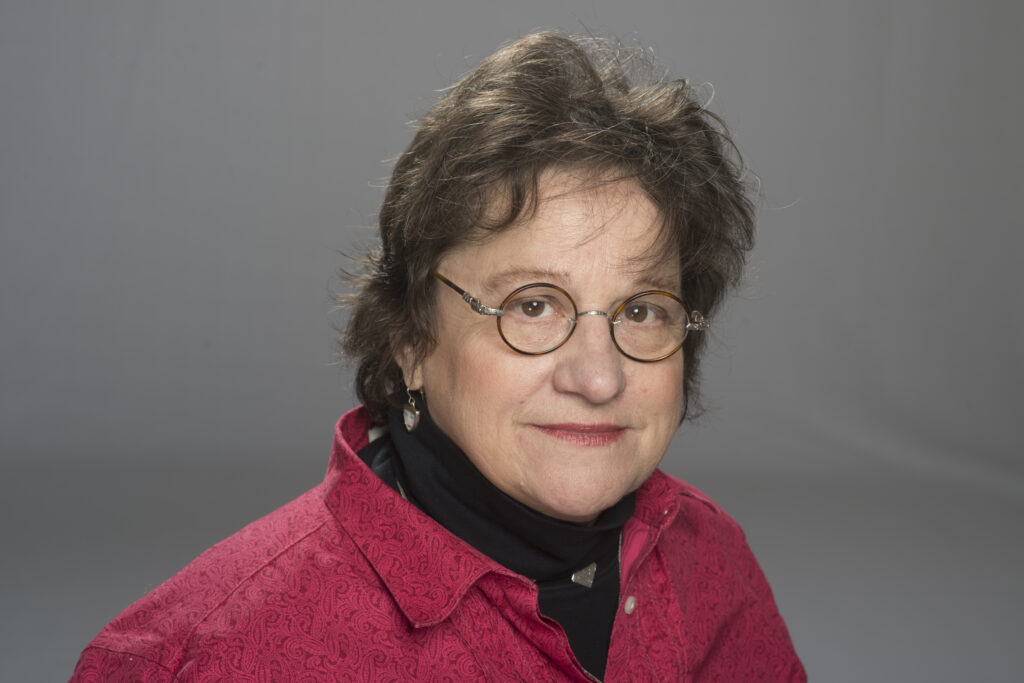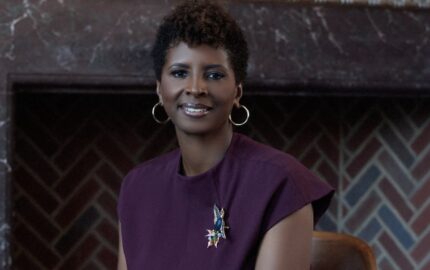
Pulitzer Prize-winning journalist Amy Ellis Nutt is the author of three non-fiction books, including the recently released “Becoming Nicole: The Transformation of an American Family.” The book tells the story of Wayne and Kelly Maines and their identical twins, Jonas and Nicole. Nicole was born Wyatt, but is transgender. The New York Times Book Review describes it as a story that “generously traces the parameters of parental love.” Nutt won the 2011 Pulitzer Prize in feature writing while working at The Star-Ledger in Newark, N.J. for “The Wreck of the Lady Mary,” a 20-page special section investigating the mysterious sinking of a fishing boat off the coast of New Jersey in 2009. Currently a science writer at The Washington Post, she is also the author of “Shadows Bright as Glass,” a nonfiction narrative book about a chiropractor who suffered a stroke and then became obsessed with creating art, and the co-author of “The Teenage Brain,” written with neuroscientist Dr. Frances E. Jensen. Nutt is a graduate of Smith College and holds master’s degrees in philosophy from the Massachusetts Institute of Technology and in journalism from Columbia University. She was a Nieman Fellow in 2004-2005 and has taught at Columbia and Princeton universities. Nutt, who lives in Washington, D.C., spoke by telephone with freelance journalist Ricki Morell. Following are edited and condensed excerpts of that conversation:
This was not just a story about a transgender child; it was a story about four people, four very different people. The aspect of interweaving their four stories was very appealing to me. The poet Honor Moore has said that we don’t choose our own stories, our stories choose us, and if we don’t tell them, we are somehow diminished. I kept thinking about that as I was writing this. It was a kind of mantra. This is not just about a family dealing with a transgender child. It’s about a family figuring out who they are. They responded to the challenge in all their humanness, with both their gifts and their flaws.
At the beginning – this was four years ago – I did say to my agent: This is a really interesting story, but do you think anybody is going to read a book about a transgender child? She had the foresight to say yes. The Boston Globe (and reporter Bella English) gets the credit for writing the original story in December 2011. I remember reading it and being very moved by it. Later, one of the lawyers representing them contacted me and asked if I would be interested in writing a book about them. I went up to Maine to meet them, and it was hard not to fall in love with the family. This was a very ordinary family in an extraordinary situation. That’s what makes it so compelling. You can identify with these people. They were dealing with this situation that most of us think is incredibly foreign, but they handled it, sometimes not well, sometimes much better. Ultimately, they were able to come together as a family. I always knew I wasn’t interested in any kind of lurid aspect of the story. I was always impressed that they were just very normal people.
To write a book, you have to loosen up as a journalist, not loosen up in terms of taking any liberties with the truth, but definitely loosen up in terms of adding your own voice and perspective and shaping it. Every story essentially has a point of view, but it’s more necessary for a book because the writer is more present than he or she is in a newspaper story. Book editors are always saying to me: Slow down here, take a breath there. You have to slow down and be reflective and think about the action or scene you’ve just described, and think about where does that fit in and in what way is that meaningful and what does it exemplify. I’m someone who is naturally drawn to the philosophical, so I actually like that, but I almost always have to be reminded to do it. When you begin a book, you have to change gears; it really is a slower gear. You’re shaping a narrative, so you have to know when to pull back and go somewhere else, or pull back and give more context, which you just don’t have time for in a newspaper story.
My editor was so good at helping me with the process of weaving in the science and the history without being too obtrusive and interrupting the narrative. It’s like weaving a fabric. You have different colors, but you don’t want them to contrast too much. You want to be subtle. Instead of plopping something big in, break it up. You need to figure out how to make it all a smooth ride but with just enough disruption to keep people interested in turning the pages.
I spent a lot of time with the family, but I wasn’t living there. I always stayed at a hotel. They always invited me to stay with them. If I had been worried that I wasn’t getting to know them well enough, maybe I would have considered it. But I felt they had opened their lives, and I was able to see them in many different contexts. And I didn’t want them ever to forget that I was writing a book and that some of this was going to be difficult.
The hardest things to negotiate were not about the family but were about Kelly’s background. She was very honest with me about everything in her life. But when it came time to seeing it in print, it was much more difficult for her. It’s one reason why we changed the names of some of her family members. Kelly was never shy about saying she had a dysfunctional family, but some of the details about other members of the family, it wasn’t necessary to have them in there. It was enough for readers to know that hers was not a typical childhood.
Nicole and Jonas were unusually mature and self aware for their ages. I always had a notebook, and they always knew I was writing down their thoughts and feelings for a book. When we went over the things that would be in there, they were fine with it all. The parents let Jonas and Nicole decide if they were comfortable with it. I think they felt that, by the end of this process, they were old enough to make their own decisions about what they wanted the world to know. I had to be sensitive to the fact that they were still growing beings who might not feel comfortable with some of their innermost thoughts, but there were very few times when I had to censor myself in that regard.
Because it was also about four people and not just about Nicole, there wasn’t as much pressure to get every detail about her inner life on the page. In some respects, Nicole was the most transparent; she never wavered in her belief about who she was. The hardest person was probably Jonas because the story was difficult for him in very different ways than it was for any of the other people in his family. He had to break away from Nicole as his identical twin and have his own life. So much of his life was defined growing up by his transgender sister.
This book was a writer’s dream because Wayne saved everything. They had very thick files from their court case that included lots and lots of therapy notes, medical records, the kids’ grades. But Wayne also had their drawings, little booklets they wrote, hours and hours of video. I mean, I even had the sonogram from when the kids were in utero.
To organize, I created a 50-to-70-page timeline. I call it a three-dimensional timeline, because it’s what’s happening with multiple characters and what’s also happening in the world. One of the first entries is before they’re born. It’s the date and the time that the sonogram is being taken. But I actually started earlier. I started with Kelly and Wayne and their life events and when they meet. That became the spine from which I worked.
In addition, I always keep a big marble-covered notebook that includes words or phrases I like or sources I need to look up. Sometimes there are quotes that I come across that might be particularly useful. I kept elaborate files that were color-coded for each person and theme. I read books on the history of mermaids just because I wanted understand that metaphor, which is a powerful one, particularly for male to female transgender children. As a science writer, I wanted to keep up with the very latest in gender research.
I’m always working on two levels: straight reporting, and aspects of the environment, history, the weather—informative detail that creates a context, maybe a metaphorical context, for a story or enhance a theme.
In terms of structure, this was a book that I knew I could tell virtually chronologically because it had that natural narrative arc. My editor helped me especially with how to end chapters with foreshadowing. Everything goes back to Dickens, right? He wrote those great short chapters because that’s the way they appeared in the paper and there was always a cliffhanger. Hopefully, I was writing something that was going to push you to turn to the next page. It was a dream of a story. Everything fell into place. The book could have written itself.
It was a little shocking to them, as it probably would be to anyone. Wayne, in particular, who probably undergoes the most significant transformation of all the characters, told me that reading the first six chapters of the book was very, very painful for him. But he recognized that it was important for other people who may be in similar situations to know that you begin at one place and that you can evolve.
I was recently at the Barnes & Noble in New York for an event with Wayne and [transgender activist] Jennifer Finney Boylan. In the back of the room, I noticed a New York City cop, the security for the evening, who was listening very intently but I couldn’t read his expression. When Wayne and I were walking out, he stuck out his hand to Wayne and thanked him and said that he was also a veteran, and that he really respected what Wayne did and that now he would read the book. It was a very powerful moment.


